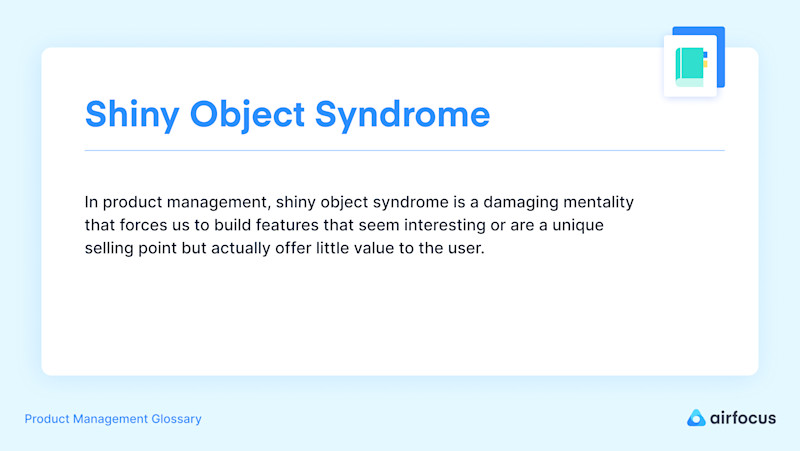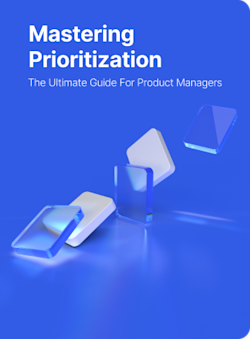Shiny Object Syndrome
What is shiny object syndrome?
Shiny object syndrome definition
In product management, shiny object syndrome is a damaging mentality that forces us to build features that seem interesting or are a unique selling point but actually offer little value to the user. The Wii U was a very expensive example of shiny object syndrome in the gaming sector. As we’re starting to pull away from feature bloat, many product managers are trying to become more conscious of shiny object syndrome.
Causes of shiny object syndrome
Falling into the shiny object syndrome trap is easy, and there are many reasons why going down that route seems like a good idea at the time.
Lack of focus - Working with customer feedback can quickly become overwhelming, making it tough to figure out where to go next.
FOMO - It’s always worth remembering that fear of missing out is not a valid reason to pursue a new idea. Watching someone else release an update or new product to acclaim will always leave you wondering what that could do for your business.
Poor planning - A poorly planned development process usually leads you down the shiny object path, eyeing easy wins as the release date creeps closer.
Unclear goals - You would be shocked to see how many product teams head into development without a game plan. This again leads to chasing shiny features and easy wins.
Why is shiny object syndrome a problem?
As mentioned, shiny object syndrome does very little to address customer needs, but it also harms product managers and the business as a whole. Common issues caused by shiny object syndrome include:
Project delays
Low team morale
Missed opportunities
Lack of value to the customer
Wasted time, money, and resources
Examples of shiny object syndrome in product management
We often see shiny object syndrome's effects without realizing what has happened. Looking back on projects can help you identify ways to avoid them next time, especially when you notice signs like:
Undelivered projects
Missed timelines/deadlines
Lack of focus and direction
Constantly changing goals, roadmaps, plans
Lower feature usage
Lack of customer acknowledgment of new features
How can airfocus help you avoid shiny object syndrome?
At airfocus, we have all sorts of tools you can use to stay on track and ignore those shiny objects! Here are a few:
Prioritization - Stay on track by prioritizing what actually matters.
Roadmaps - Set a clear direction for product development.
Easy collaboration - Work together seamlessly so everyone stays informed.
Templates - Save time with our ready-made templates for roadmaps, prioritization, and more.
Resources and guides - We have a huge catalog of resources to keep you focused, including checklists, ebooks, reports, and our in-depth and 5-minute guides.

General FAQ

Glossary categories
Prioritize with confidence

Experience the new way of doing product management








